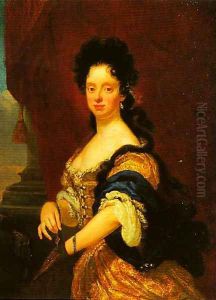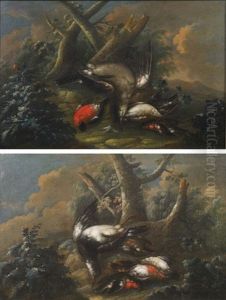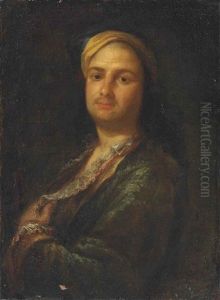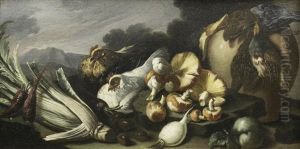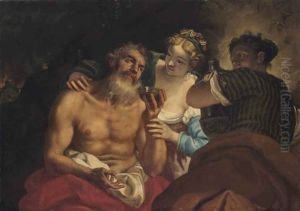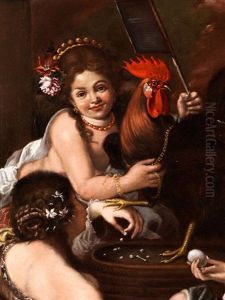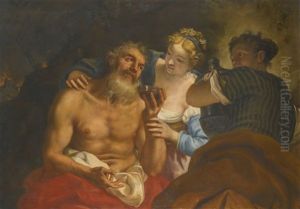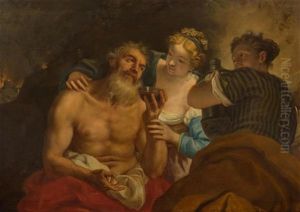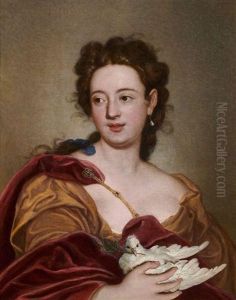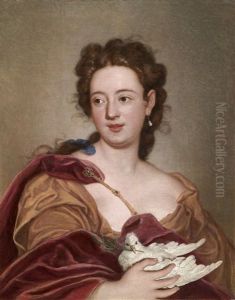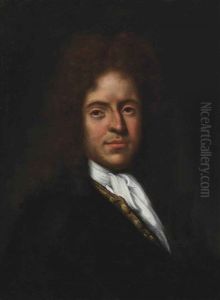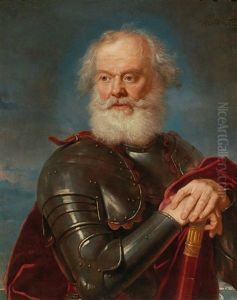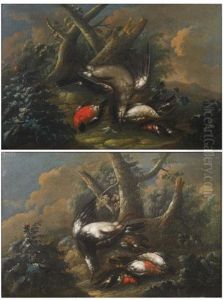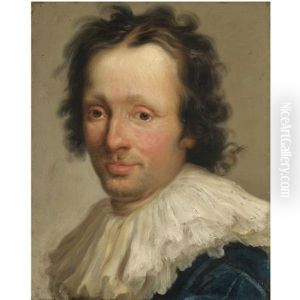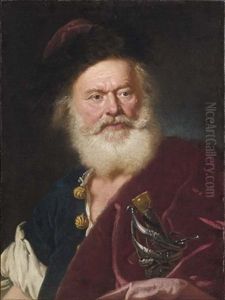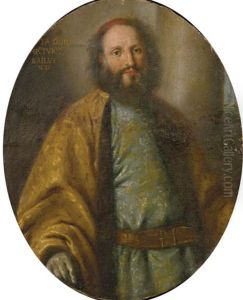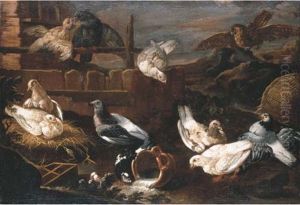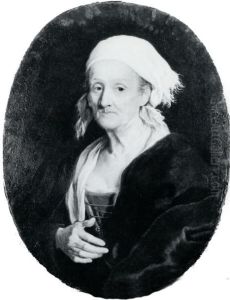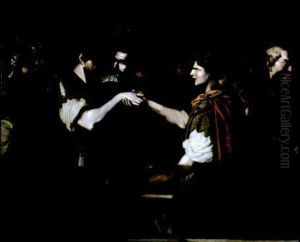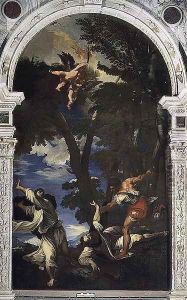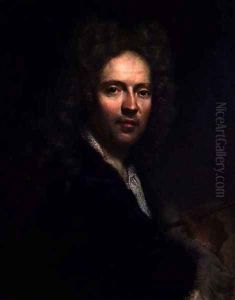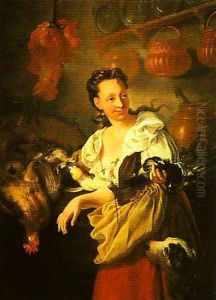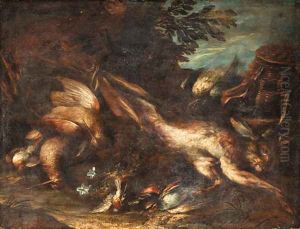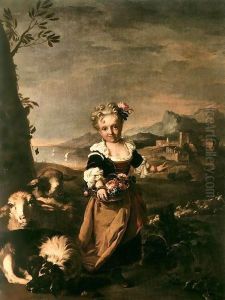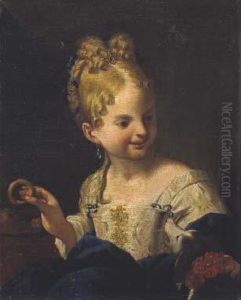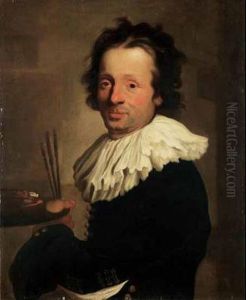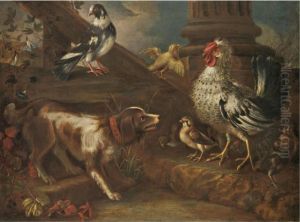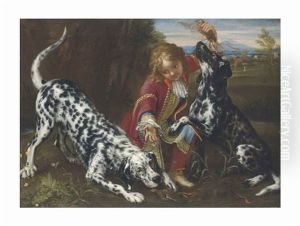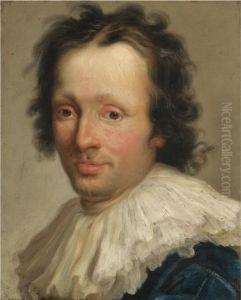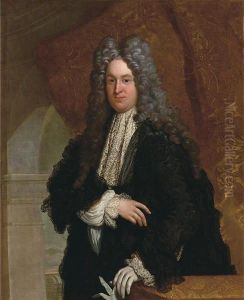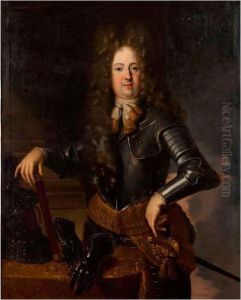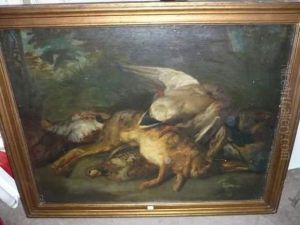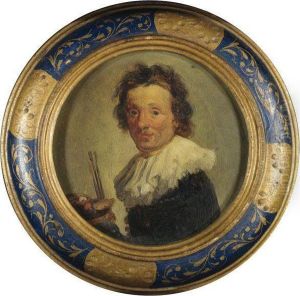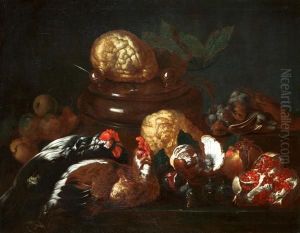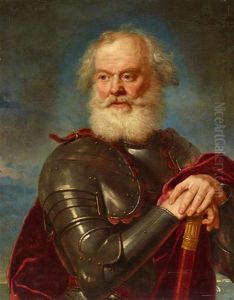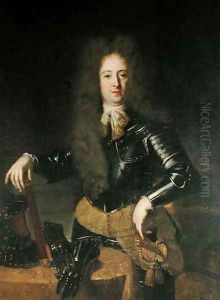Niccolo Cassana Paintings
Niccolo Cassana, also known as Nicoletto, was an Italian painter born in Venice in 1659. He belonged to a family of painters: his father, Giovanni Francesco Cassana, was a prominent artist, and his siblings Giovanni Agostino and Maria Vittoria were also painters. Niccolo received his initial training from his father, who taught him the fundamentals of painting, and he was also influenced by the works of other Venetian masters such as Giovanni Battista Tiepolo.
Cassana's oeuvre primarily consisted of portraits and historical subjects. He was known for his skill in depicting his subjects with realism and vitality, capturing both the physical likeness and the character of those he portrayed. His work was characterized by a strong sense of composition, a fine attention to detail, and a rich palette that was typical of the Venetian school of the time.
In the late 17th century, Cassana moved to Genoa, and later to Florence, where he worked for the Medici court. His talent in portraiture won him the favor of the Grand Duke Cosimo III de' Medici, who appointed him as a court painter. During his time in Florence, he produced several important works, including portraits of the Medici family and other Tuscan aristocrats. Cassana's style evolved during his stay in Florence, reflecting the influence of the Tuscan baroque.
Niccolo Cassana's work was well received, and he garnered a reputation that extended beyond Italy. He traveled to England in the early 18th century, where he continued to work as a portraitist. His ability to capture the elegance and sophistication of his subjects made him popular among the English aristocracy.
Cassana's success, however, was not without its challenges. His later life was marked by competition from other artists and changing tastes in art, which eventually led to a decline in his popularity. Despite this, he continued to paint until his death in 1714. Today, Niccolo Cassana is remembered for his contribution to the art of portraiture and his place within the broader context of Italian baroque painting. His works can be found in various museums and collections, offering a glimpse into the artistic and cultural milieu of his time.
